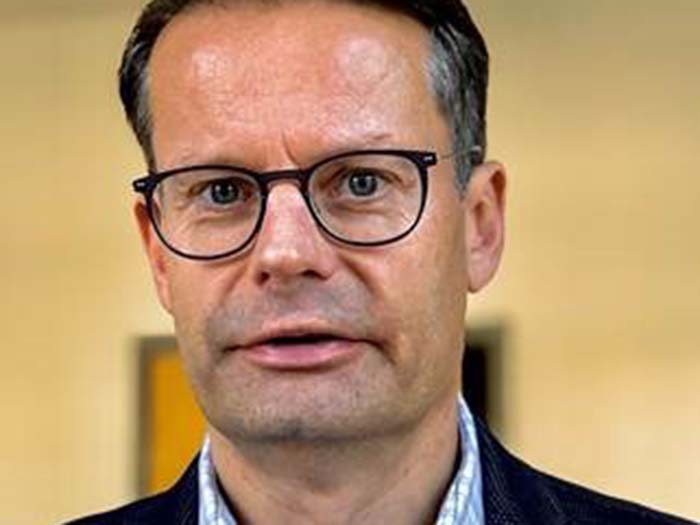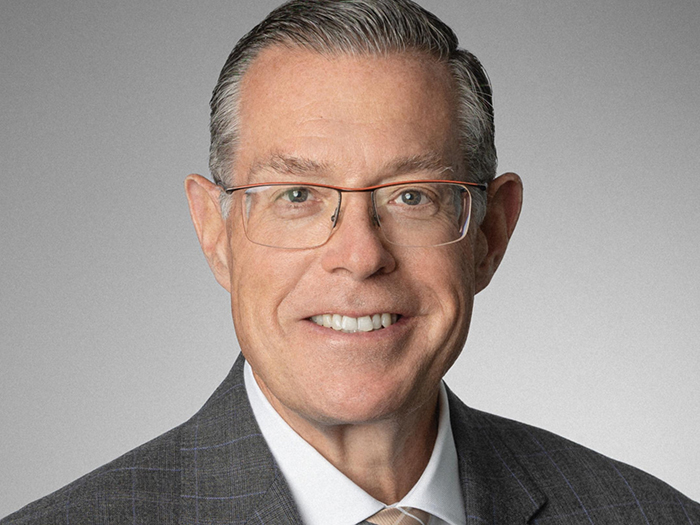Climate Risks Changing Your Coverage Needs? Descartes’ Daniel Vetter Says Parametric Insurance Can Help

Earlier this summer, Risk & Insurance® Editor-in-Chief Dan Reynolds had an opportunity to talk to Daniel Vetter, the head of North America for Descartes Insurance Solutions Agency, Inc.
The company offers data-driven parametric insurance coverage for climate change-related risks. What follows is a version of that conversation that’s been edited for clarity and length.
R&I: What does the range of parametric insurance cover look like these days?
Daniel Vetter: I would say in answer to your question, it’s still today largely an offering around climate risk and around climate perils. But I think as an industry we have moved onwards from the traditional earthquake and wind products that have been around for quite some time.
We can get into a little bit more detail around some of the more, what we would characterize, the more esoteric perils, such as for example, wildfire, hail, tornado.
Technology has allowed us, not only at Descartes, but as an industry to really develop solutions and offerings for customers around perils where maybe the traditional market no longer provides adequate protection or not enough adequate protection.
By and large, I think it’s still mostly a play around climate and natural catastrophe perils. We have seen others try to wrap their arms around the most newsworthy topic these days, which is pandemics.
I have not seen it actually work, but this is where I see an opportunity for the industry to broaden our reach. We could also look at line items, such as product recall, for example, which are sometimes climate related, quite frankly, or are related to how mother nature actually treats a certain crop or a certain line item that ends up in the food chain. I think there is opportunity there for a parametric approach.
R&I: Having said that, then, when we think about the strengths of parametric, Daniel, what are the really good opportunities for you in the next year or so?
DV: I think it’s that broad space of helping clients address the financial consequences around climate risk. What we’re trying to do is address pain points that clients have, be it around a specific peril or a set of perils for specific locations or geographies that an insured might be in.
What we do is a non-standard product that gives us an opportunity to be really tailored, to be very specific. When you think about these more developing climate perils such as hail, tornado, wildfire, and also flood; look at Europe this summer, flood is a very quickly developing disaster for a lot of parts of Europe.
Being able to develop a solution very quickly, I think that’s exciting and that’s where we see the opportunity.
R&I: Being agile, to put it in a nutshell, right?
DV: Exactly. I’ll give you a quick example just to frame that. One of our broker partners has a client that is a hospitality organization. They manage the facilities for the National Park Service.
They were concerned about, “Well, if I have a wildfire and I have a lot of cancellations, that’s not picked up by insurance.” Because of air quality due to a fire, a visitor might say, “No, I’m not going to that national park. I’m going to cancel.”
We were able to develop a solution for them using the air pollution sensors that the forest service had actually put up. This is innovative and it goes to a specific pain point.
R&I: What do you see as the biggest challenge in bringing this product to the insured?
DV: What we talk about as an organization on a daily basis, is making sure that our product is properly understood. What I’m talking about here is how a parametric product differs from a traditional indemnity or traditional property insurance product. What it does, but maybe more importantly, understand what it doesn’t do.
That’s a big part of what we do, so there’s an educational element to it. The other part, and this goes more so towards the discussion with our broker partners, is ensuring that people understand that a parametric product can co-exist really nicely with a traditional property insurance program.
So it’s not a matter of, “I am replacing.” It is a matter of, “We are complementing.” And how this aligns and how you actually go about the alignment, that’s where we are spending quite a bit of time on.
R&I: That makes sense to me. I guess it would depend on where in the tower you may be and how this particular product can attach and perhaps aid the overall program?
DV: That is part of it. I would not suggest that parametric products can’t work in a high excess position. Parametric products, however, work best when we are “in the money,” i.e. in an area where losses typically occur. That can be within a retention, within a deductible, as a first layer of defense.
The reason for that is, because we underwrite the climate event or the probability of a climate event or an earthquake to happen. Rather than, as the traditional underwriter does, the consequence the climate event has on a physical structure.
This is another, I think a major advantage benefit we can offer and to customers, we can actually back test how a parametric cover would have responded to a past event, which is something you don’t get in traditional insurance because of the, at times, ambiguous claim settlement process.
With us, the coverage gets triggered, and the payment usually follows within two to four weeks. So you have that opportunity to back test, and that is tangible for a risk manager, a CFO, a treasurer. And so therefore the application of a parametric product is best suited for a layer that’s closer to the money or closer to loss activity.
R&I: The beauty of it is you’re triggering off of a number, not policy wording.
DV: Correct. We have some standard clauses in there, but it’s more about jurisdiction and how quickly we are paying and who is the data settlement agent. The policy is usually about four pages long, that’s it. So we issue policies typically before inception date, because it’s simple.
Back to your earlier question about sort of the opportunities that we see, and it’s really first and foremost about how we communicate what a parametric product is. And oftentimes we feel clients and brokers, they think, “Gee, this is a financial instrument. They talk about indices and exits and strikes, and I don’t get it. And I don’t want to invest the time to find out what it actually is.”
And all that’s to it is we underwrite the climate event, not the consequence of the event, or the actual loss. In other words, a parametric policy is still a risk transfer product and actually is more straightforward than traditional insurance. We just need to do a better job of explaining what it is, and what it is not.
R&I: You’re relatively new. When were you founded?
DV: In October, it’s going to be three years. We were set up or are set up as an MGA, exclusively focused on the parametric risk space. We were founded by three individuals who came out of AXA Climate in Paris.
And then the U.S. operation started in November of last year after a successful completion of a series A funding round, and with the capital that came into the organization, we’re funding new expansion here in North America and likewise, we have a similar undertaking going on in Southeast Asia and Australia.
R&I: How is your talent acquisition process going and at what kind of a pace? How quickly do you want to build?
DV: I think a startup organization is attractive for a variety of professionals.
When we look at our team in Paris, this is a younger team of professionals, mostly coming out of the data science and climate policy world. I think the attractive part that I think includes us here in the U.S. as well is an opportunity to work on what we believe are cutting edge products that help sort of address some of the consequences of climate change.
That was certainly attractive to me when I started my discussions with the team in Paris almost a year ago.
So in that sense, I think that’s an attractor in the marketplace, having an opportunity to be part of something from sort of the ground floor onwards.
But when it comes to us transacting in the marketplace, our competition is not Lemonade, or some of the other Insurtech startups that have been popping around. Our competition is Munich Re, it’s Swiss Re, it’s AXA, established names that have been around for quite some time.
The perception in the marketplace is not like, “Oh, this is the young kid on the block.” It’s very much, I think we’re on a level playing field with them.
And then maybe lastly, in terms of sort of attraction or attractiveness as an employer, I mentioned it before. We are expanding into Southeast Asia, into Australia, and so I think that increasingly global footprint is certainly attractive to many employees, including the team here in the U.S.
R&I: I appreciate that. Technology is on everyone’s lips as a risk. It’s also a risk management tool. I just wanted to ask you where you see it playing a role in what you’re doing?
DV: It’s the cornerstone of our value proposition. That is what we view as a key differentiator for us. So our underwriting and risk quantification approach is heavily based on technology.
And what I mean with that is, for example, advanced radar, advanced satellite technology, ground sensor technology, plus the data we can derive from these technologies, has developed dramatically over the past five to 10 years.
The data we can derive from that is the basis of ultimately how we price risk. We have been contracted with a number of external providers in those areas and coupled with our own intellect, own proprietary modeling approach and expertise that the team has been building over the past a few years, we believe it’s a real key differentiator in what we do.
In other words, we would not exist without the technology that’s been developing so dramatically over the past few years.
R&I: You mentioned the U.S. Forest Service and its air monitors. I’m thinking of NOAA and their approach to storm prediction and tracking and the National Weather Service. I imagine you’re pulling a lot of publicly available data through your service providers to kind of get what you need to write a policy, is that fair to say?
DV: That is fair to say, but it goes much beyond that. You have, particularly in the radar and the satellite space, the opportunity for companies to get their own satellites out into orbit on a commercial basis. This has a direct impact on what we do.
Whereas five or 10 years ago when it came to satellites, you would rely on NASA or the European Space Agency in the hope you might get a ride with one of your satellites. This has opened up quite a bit.
I’ll give you an example in the flood space. We’re contracting with an organization that has their own satellites. They’re able to create what we call virtual gauges, where you can monitor water levels from space and down to a level that you have not seen before.
We recently closed a transaction where we have very traditional physical gauges in the water that we rely on for data, but we’re complimenting that with a virtual gauge in the event that a virtual gauge in a hurricane would actually give out. These are the kinds of things that five years ago you would not have been able to do.
Ultimately, what this is meant to do is to narrow basis risk. And basis risk has been a concern around parametric products for many, many years, meaning that the actual event or the loss following an actual event would not match with the modeled loss. That the underwriter actually got the modeling wrong.
So, as an example, you would model an earthquake coverage that would start at 6.0 and above, because you, as the customer operating a facility in California, basically, your expectation was that your facility would withstand an earthquake up to 6.0.
But ultimately, it turns out you were wrong with that assumption. You have a 5.5 earthquake and sustained a massive amount of damage, but there was no coverage.
That’s “basis risk”. With improvements in technology and the data we can derive from them, we’re able to narrow “basis risk”, because we want to avoid a situation where there is an event, but no payment, or there is an event, but no loss and still a payment.
So these are sort of the scenarios that we’re trying to avoid.
R&I: Tell us more please about how that plays out in policy wording.
DV: Our policies do contain a ‘proof of loss’ language.
It would be perfectly permissible to say, “You sustained a financial loss because of a climate event or an earthquake,” which can include, for example, a business interruption a client has sustained because of a climate event or an earthquake, although they may be lacking a physical loss, but — for example— their employees are unable to come to work, or the supply chain of the customer may be interrupted.
So there are ways and means to sort of minimize, but never eliminate basis risk. And maybe it’s worthwhile to point out because I always do: there is a ton of ‘basis risk’ in traditional insurance products, and that’s called exclusions. And particularly when insurers add an exclusion, that actually widens the basis of risk quite considerably.
R&I: On the marketing side, what are you and your broker partners doing to help insureds better understand parametric covers?
DV: First, we’re trying to really be very transparent about what the product covers, and what it does not. It’s not that complicated. So we talked about the opportunity to be really laser focused, to be tailored around a specific peril or a location or a set of locations in a given geography.
There are certain things that are not covered and to be really transparent about this, I think that’s part of the educational process. But also the opportunity to back-test, as we touched on before, I think alleviates some of that concern. However, we also recognize that because it is a somewhat different insurance product, there is a need to educate a number of constituencies and make them familiar and comfortable with the product.
That may include several people within a brokerage firm, but then it’s the risk manager, perhaps the treasurer or the CFO. It could be the board of directors that needs to be convinced about the effectiveness of a parametric product.
We recognize that there are sales cycle for parametric products, they can actually take a while until someone says, “Yeah, this is not only interesting, but this is actually something that I want to do because it really helps me address a specific pain point or a series of pain points.”
And then maybe, last point, when you talk to risk managers, most, if not all, will tell you that the most important good that they have is the relationship with their underwriters. Of course, that has limitations when they ask for double the premium.
But we’ll leave that on the side for a moment. The point here is that they don’t need to give up that relationship with the traditional underwriter. Again, these products can coexist really nicely. And that’s also more of, I guess, a softer concern that we’re sometimes walking into.
R&I: Daniel, when you look back at your career, what do you think led you to this point? What influences or experiences brought you to where you are and that you consider valuable to you?
DV: It’s interesting. When I left Swiss Re, I took a little bit of time off and started to think about what could be of interest to me. More and more, I started to narrow this down to actually three things. It’s people and culture, strategy, and I wanted to do something where I can continue to learn.
With the discussions with Descartes, increasingly as I went through these different levels and sets of dialogue, the more it became apparent.
These three line items are readily apparent. And this is an opportunity to bring in expertise, experience that I’ve had a chance to develop over many years. And to do so in a smaller setting is really energizing. I’d say it’s an opportunity to leave behind maybe the not-so-great things that you encounter in a large organization and really bring in what you’ve learned and what you’ve appreciated over the course of your career.
R&I: Daniel, is there anything about this enterprise or your passion for it that you wanted to talk about that we didn’t give you a chance to discuss?
DV: I think we covered it. If just in summary, to the brokers and the buyers out there, I would say parametric products are not that complicated.
It’s not a financial instrument, like an insurance-linked security. You don’t need a CFA designation to understand this. It’s ultimately… and I think this is a point that sort of gets mixed up every now and then, it’s not a financial instrument or a derivative. It is an insurance product.
You get a policy, you get a claims payout very much the way that you’re used to from traditional insurance carriers. Just our claims payment will be a lot faster. &










